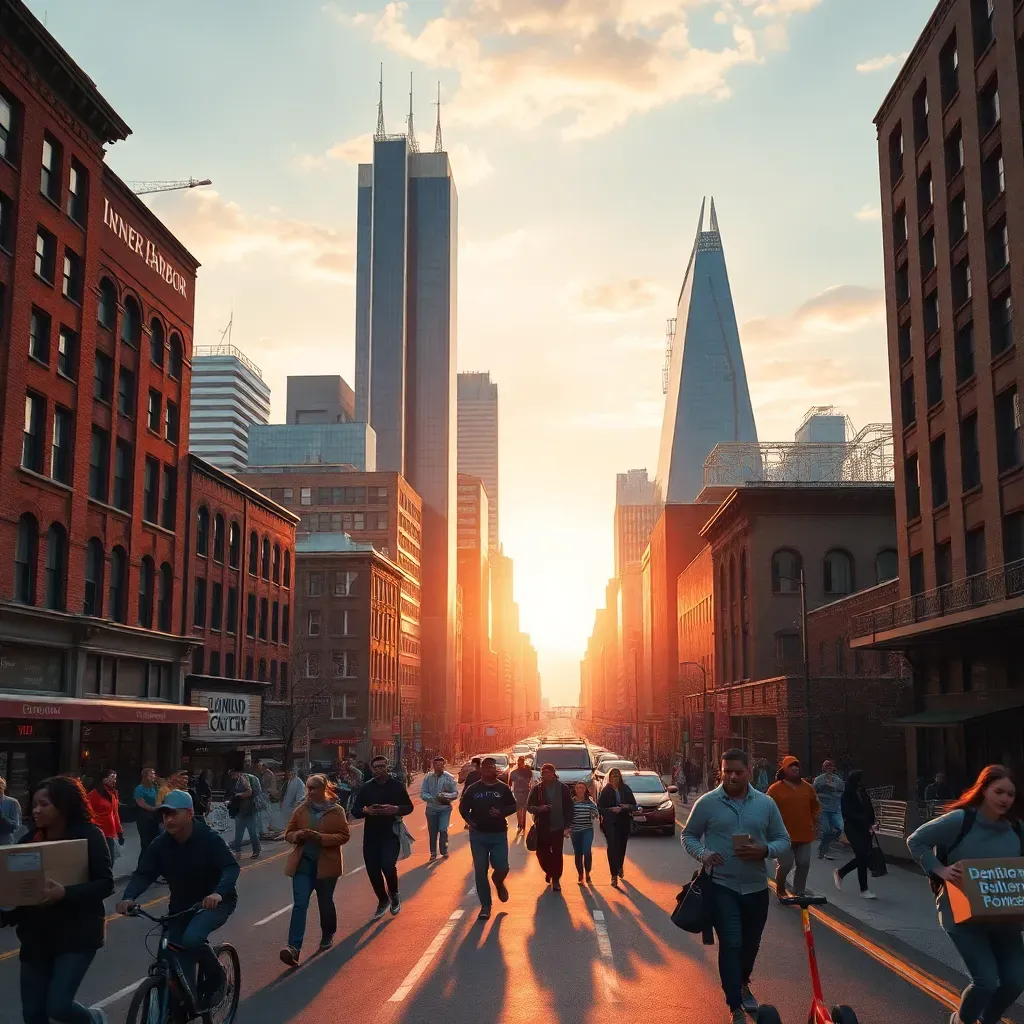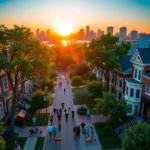Is Baltimore moving to safer grounds? The truth no one’s telling you
- Baltimore’s Reputation: What Makes Baltimore “Sketchy” or “Rough”?
- Is Baltimore Moving to Safer Grounds? Recent Crime Trends and Data Insights
- Neighborhoods Matter: Where Is Baltimore Safe and Where Should You Be Cautious?
- The Human Side: How Baltimore’s People and Communities Are Fighting Back
- Living in Baltimore: Balancing the Pros and Cons of Safety and Lifestyle
- Comparing Baltimore’s Safety to Other Major US Cities: What’s Unique?
- What’s Next for Baltimore? Future Plans and What They Mean for Safety
- Opinions From the Ground: What Locals and Visitors Are Saying About Baltimore’s Safety
- The Real Deal on Baltimore’s Safety and Moving Prospects
- References and Further Reading
Baltimore’s Reputation: What Makes Baltimore “Sketchy” or “Rough”?
Baltimore often pops up in conversations about gritty and dodgy cities in America. When people describe Baltimore as rough or dicey, they usually refer to certain neighborhoods where crime incidents have been reported more frequently. But what exactly shapes this image?
Historically, Baltimore has faced challenges with violent crime and poverty, especially in some urban areas. Media portrayals, especially shows like The Wire, have painted a vivid picture of the city’s struggles, which still influence public perception today.
However, it’s important to remember that Baltimore isn’t alone in this. Many risky towns in the US share similar issues, but Baltimore’s visibility in pop culture makes it stand out. Compared to other unsafe cities in the US, Baltimore’s crime rates are high but not always the highest.
To understand better, let’s break down some key terms:
- Crime zones refer to areas with higher reported incidents of crime.
- Violent neighborhoods are places where violent crimes like assaults or robberies happen more often.
- Bad parts of Baltimore is a general term locals and visitors use to describe areas with more safety concerns.
Knowing these terms helps when reading crime reports or talking to locals about safety.
Is Baltimore Moving to Safer Grounds? Recent Crime Trends and Data Insights
Looking at recent data, Baltimore has seen fluctuations in crime rates. Violent crime, property crime, and auto theft remain concerns, but some neighborhoods report improvements thanks to focused efforts.
When compared to cities like Detroit, Memphis, and Philadelphia, Baltimore’s crime rates are in a similar ballpark, though each city has its unique challenges.
The Baltimore Police Department has launched new strategies, including community policing and crime prevention programs, aiming to build trust and reduce incidents.
An interesting development is the relocation of state workers downtown, which some say brings more foot traffic and eyes on the streets, potentially improving safety. Others worry it might increase congestion and strain resources.
Locals on Reddit and other forums share mixed feelings — some notice positive changes, while others remain cautious, especially about certain sketchy areas.
Neighborhoods Matter: Where Is Baltimore Safe and Where Should You Be Cautious?
Baltimore’s neighborhoods vary widely in safety and vibe. Popular spots like Canton, Federal Hill, and Fells Point are often highlighted as safer and more welcoming, with active community groups and nightlife.
On the flip side, some areas are known as rough neighborhoods or crime hotspots. Residents and visitors are advised to be cautious, especially at night or in poorly lit streets.
Walk Score ratings show that getting around Baltimore can be convenient, but transit safety varies by route and time of day.
Here’s a quick table comparing some neighborhoods by safety, affordability, and vibe:
| Neighborhood | Safety Level | Affordability | Vibe |
|---|---|---|---|
| Canton | Moderate to Safe | Moderate | Trendy, Waterfront |
| Federal Hill | Moderate to Safe | Moderate | Historic, Lively |
| Fells Point | Moderate | Moderate | Touristy, Artsy |
| West Baltimore | Higher Crime Zones | Affordable | Residential, Challenging |
| East Baltimore | Higher Crime Zones | Affordable | Mixed, Developing |
The Human Side: How Baltimore’s People and Communities Are Fighting Back
Despite challenges, Baltimore’s communities show resilience. Neighborhood watches, grassroots safety programs, and local leaders work hard to improve conditions.
Police-community partnerships aim to build trust and encourage residents to report incidents and participate in safety initiatives.
Success stories include revitalized parks, community events, and youth programs that keep people engaged and streets safer.
Baltimore’s culture and community spirit play a big role in pushing back against crime and fostering a sense of belonging.
Living in Baltimore: Balancing the Pros and Cons of Safety and Lifestyle
Many choose to live in Baltimore for its affordability, prime East Coast location, and vibrant arts and food scenes. The job market, especially in healthcare and education, is a draw.
However, concerns about crime, poverty, and public transit affect daily life. Some residents adjust by choosing safer neighborhoods or using cars instead of public transit.
People who recently moved here often share mixed feelings — excitement about the city’s character but cautious about safety. Their advice usually includes visiting neighborhoods at different times and connecting with locals for insights.
Comparing Baltimore’s Safety to Other Major US Cities: What’s Unique?
Baltimore shares many urban challenges with cities like Chicago, St. Louis, Cleveland, and Philadelphia. Crime rates and police presence vary, but community programs are common across these cities.
Here’s a comparison table highlighting key safety factors:
| City | Violent Crime Rate (per 100k) | Community Policing Efforts | Transit Safety | Urban Challenges |
|---|---|---|---|---|
| Baltimore | High | Active | Moderate | Poverty, Aging Infrastructure |
| Chicago | High | Strong | Good | Gang Violence, Traffic |
| St. Louis | Very High | Moderate | Limited | Economic Decline |
| Cleveland | High | Developing | Moderate | Vacant Properties |
| Philadelphia | High | Active | Good | Drug Issues |
Baltimore’s crime zones share traits with trouble spots in the US, but local efforts and culture give it a unique flavor.
What’s Next for Baltimore? Future Plans and What They Mean for Safety
City and state governments are rolling out plans to improve safety and urban living. Moving state workers downtown aims to modernize spaces and boost local economy.
Investments in community programs, infrastructure upgrades, and crime prevention are underway.
Experts suggest these moves could help Baltimore move to safer grounds over time, but challenges remain.
The key will be sustained effort and community involvement.
Opinions From the Ground: What Locals and Visitors Are Saying About Baltimore’s Safety
Longtime resident “Some parts of Baltimore still feel shady at night, but neighborhoods like Federal Hill have really cleaned up.”
Newcomer “I was worried about crime before moving, but after living here a year, I feel safe in most places during the day.”
Business owner “The downtown area is buzzing with activity now that more state workers are here. It feels safer with more people around.”
Visitor on Reddit “I visited Baltimore for a weekend and didn’t feel dodgy at all, but locals warned me to avoid certain streets after dark.”
Sources: Reddit BaltimoreCounty, TripAdvisor Baltimore

The Real Deal on Baltimore’s Safety and Moving Prospects
Baltimore’s reputation as a risky town in the US comes from real challenges with crime and poverty, but it’s also a city full of history, culture, and community spirit.
Crime rates remain a concern, especially in certain bad parts of Baltimore, but ongoing police efforts and community programs are making a difference.
Neighborhoods vary widely — some are safer and more affordable, while others require caution, especially at night or in less lit areas.
For those wondering is Baltimore moving to safer grounds, the answer is cautiously optimistic. Progress is happening, but it’s uneven and requires vigilance.
If you’re thinking about moving or visiting, do your homework: visit neighborhoods, talk to locals, and stay aware of safety tips. Baltimore offers a unique urban experience with both challenges and rewards.
References and Further Reading
What do you think about Baltimore’s safety? Have you ever lived or visited here? How would you like to see the city improve? Drop your thoughts, questions, or experiences in the comments below — maybe you want to share your take on the sketchy neighborhoods or suggest hidden gems that feel safe and welcoming. Let’s get the conversation going!
 Is Baltimore living in worth it? The shocking truth you won’t believe
Is Baltimore living in worth it? The shocking truth you won’t believe Is Baltimore best areas to live? The truth locals won’t tell you
Is Baltimore best areas to live? The truth locals won’t tell youSi quieres conocer otros artículos parecidos a Is Baltimore moving to safer grounds? The truth no one’s telling you puedes visitar la categoría Baltimore.

Leave a Reply